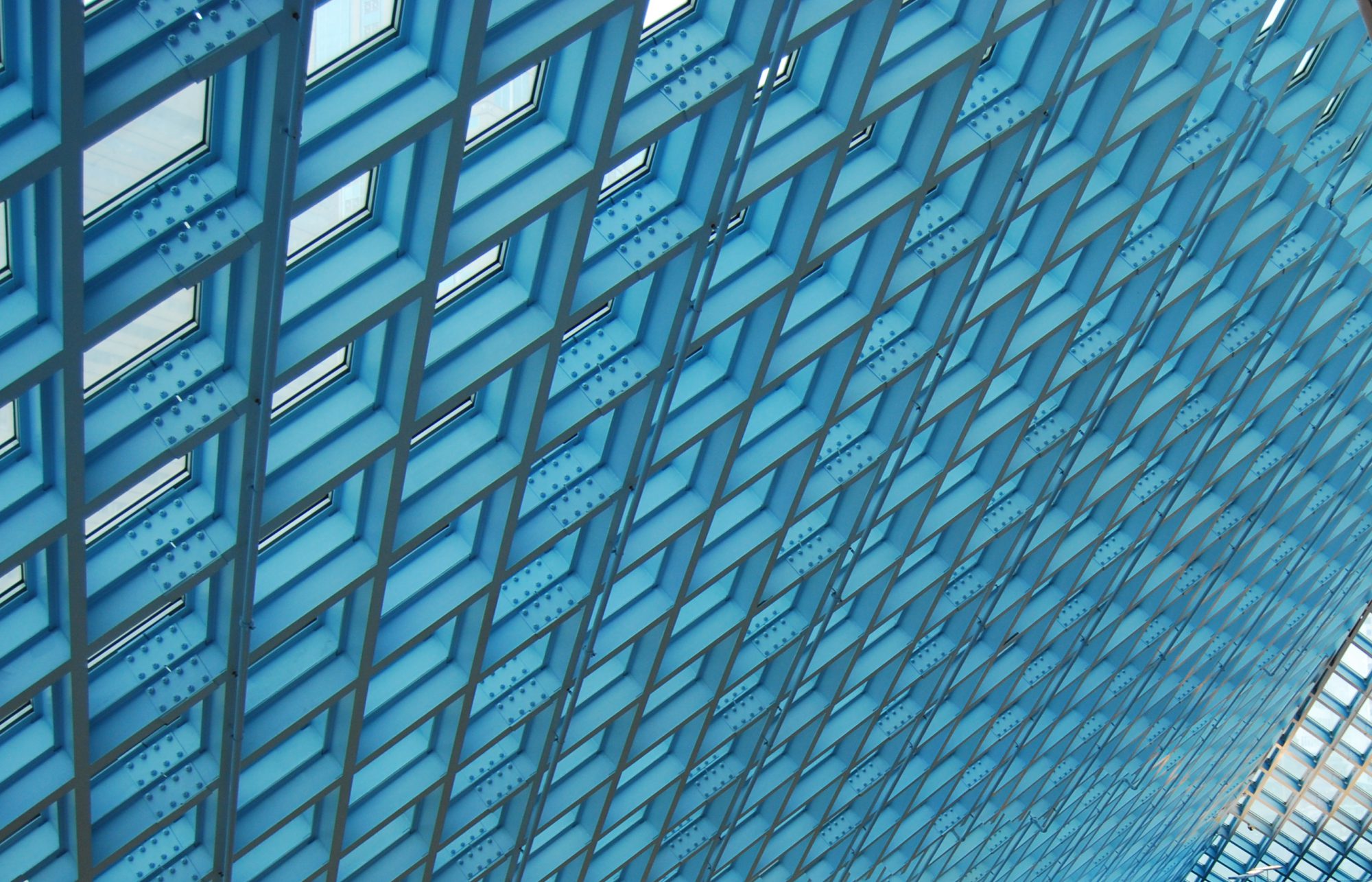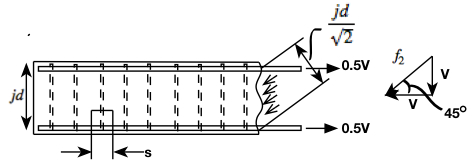The most basic ‘truss’ model assumes ![]() inclination of struts (compressive forces).
inclination of struts (compressive forces).
(1) ![]()
(2) ![]()
(3) ![]()
(4) ![]()
Substitute ![]() with
with ![]() , rearrange:
, rearrange:
(5) ![]()
Note: multiplying ![]() by
by ![]() is a worst-case scenario.
is a worst-case scenario.
This force ![]() is also the force
is also the force ![]() in the longitudinal reinforcement, since the inclination angle is
in the longitudinal reinforcement, since the inclination angle is ![]() .
.
![]() is distributed to the longitudinal steel;
is distributed to the longitudinal steel;
Compression steel is not necessarily present, in which case the tension steel takes ![]() .
.
We can solve for ![]() or for
or for ![]() , from eq.
, from eq. ![]() , for analysis
, for analysis
The tensile stress increase in the longitudinal reinforcement should be checked, as well as the compressive stress in the web (using eq. 1).
The crack inclination angle of ![]() is, of course, an assumption that we would like to improve upon. Modified compression field theory takes into account varying inclination angles. This theory will not be outlined here due to its highly empirical nature. Modified compression field theory is generally considered as an acceptable alternative to the standard ACI shear procedure previously outlined.
is, of course, an assumption that we would like to improve upon. Modified compression field theory takes into account varying inclination angles. This theory will not be outlined here due to its highly empirical nature. Modified compression field theory is generally considered as an acceptable alternative to the standard ACI shear procedure previously outlined.
It becomes evident, even in the simple ![]() truss model, that shear effects can increase stresses in the longitudinal steel, in particular near the supports of a beam. This is an issue that is not addressed in current code.
truss model, that shear effects can increase stresses in the longitudinal steel, in particular near the supports of a beam. This is an issue that is not addressed in current code.
This can have additional consequences for pre-tensioned members, as the location of the supports coincides with the location where the strands are being developed (transfer length). Typically, some mild longitudinal steel should be included near the supports, for this reason.

